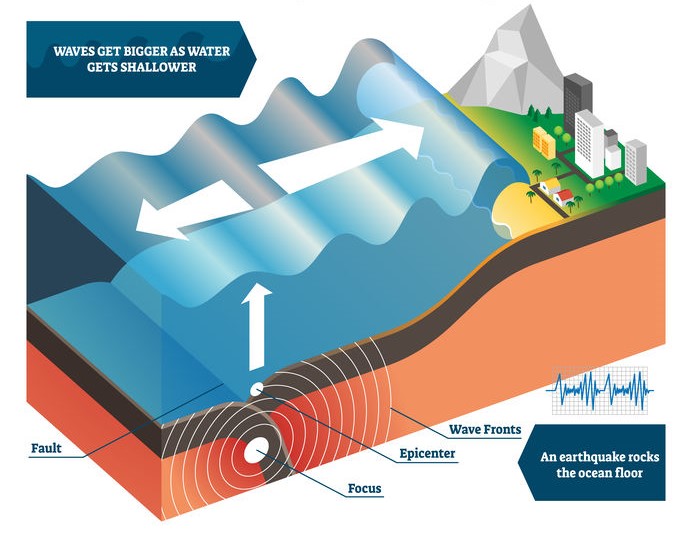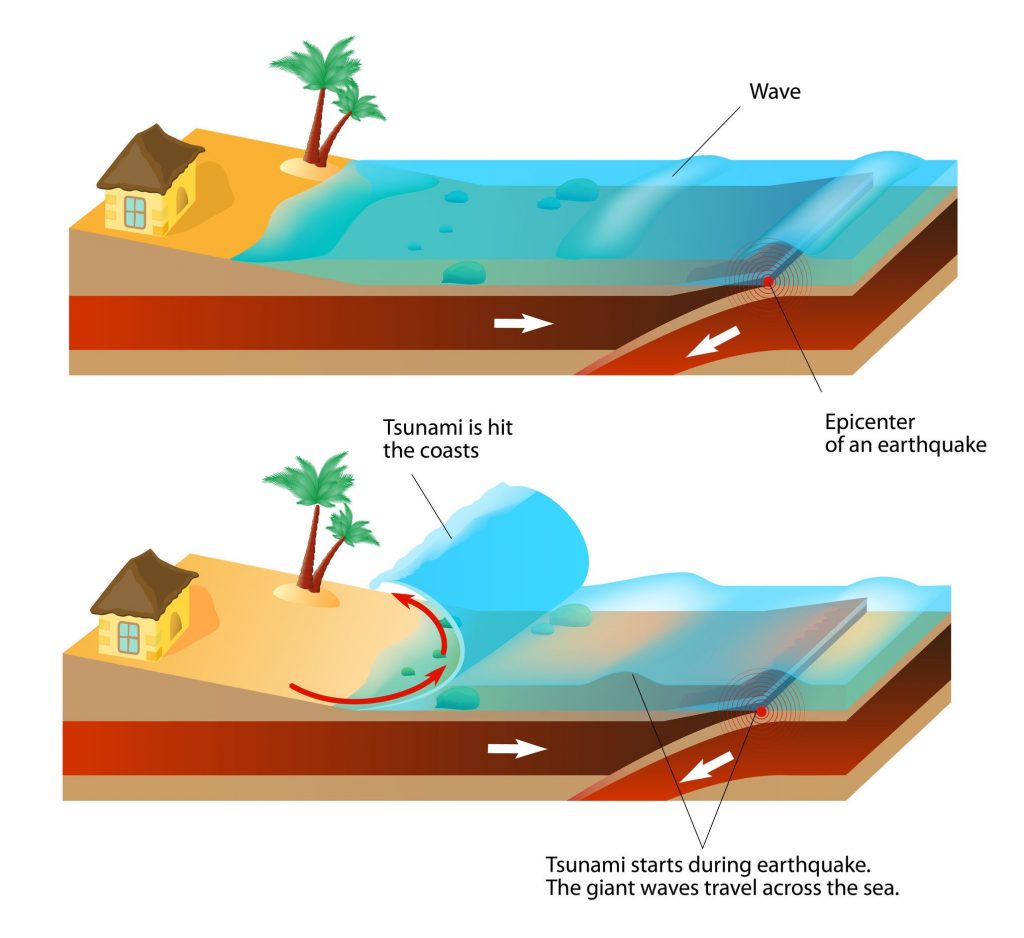A tsunami is a series of waves in a water body caused by the displacement of a large volume of water, generally in an ocean or a large lake. Earthquakes, volcanic eruptions and other underwater explosions above or below water all have the potential to generate a tsunami.

When the ocean floor at a plate boundary rises or falls suddenly, it displaces the water above it and launches the rolling waves that will become a tsunami. About 80 percent of the Tsunamis occur in the Pacific Ocean around the Ring of Fire. Tsunamis can also be caused by underwater landslides and volcanic eruptions.
Tsunamis travel across the ocean at up to 800 kilometers an hour. They can cross the entire of the Pacific Ocean in less than a day. Their long wavelengths mean they lose very little energy. In deep ocean waves are barely visible. As they approach the coast and enter shallow water they slow down and begin to grow in energy and height. The top of the waves move faster than their bottoms do, which causes them to rise.


